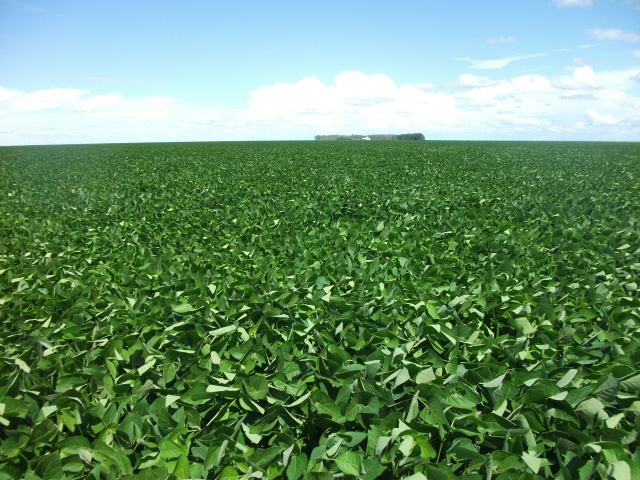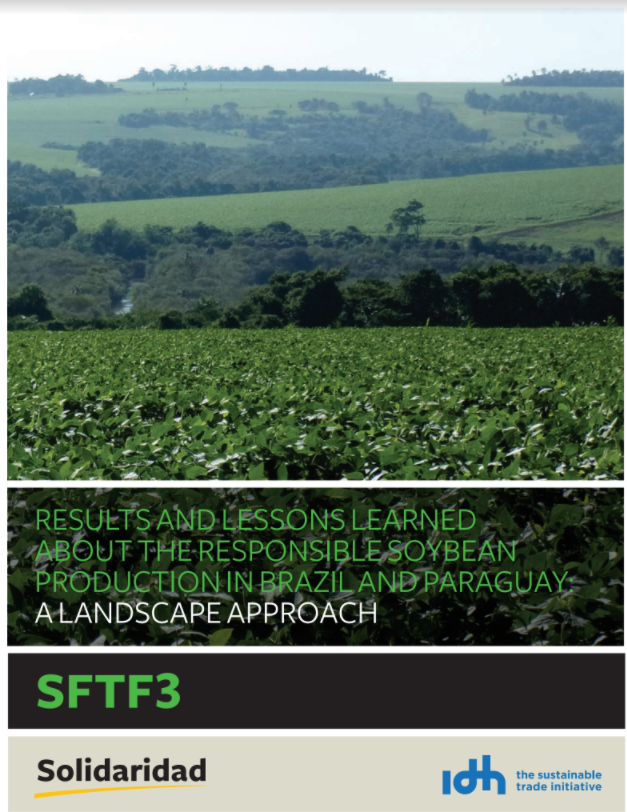
Soy plantations in Mato Grosso state, Brazil
These are a few of the conclusions that IDH and Solidaridad found as a result of analyzing seven projects in Paraguay and the states of Mato Grosso and Bahia in Brazil. The two organizations jointly tested an approach in which producers, local governments and civil society organizations in a region jointly designed and invested in sustainable land use to end illegal deforestation. Using experience from the seven projects – IDH and Solidaridad’s first landscape projects in South America – next steps were determined.
Crop diversification is key
Another important conclusion from the project was that land use management should not be limited to cash crops. Large-scale soybean and livestock origination areas require diversification of production for local livelihoods and consumption – currently, a large part of the food is imported from other states. By stimulating and investing in development of food crops by small and medium-sized producers, livelihoods and resilience against price volatility can be improved.
Download: Results and Lessons Learned About Responsible Soybean Production in Brazil and Paraguay (PDF)
IDH Landscape Director Daan Wensing said, “Together with the Mato Grosso government, we aim to build an investable Produzir, Conservar & Incluir (PCI) programme. The basic strategy is to intensify cattle ranching to free up land for responsible soy and food production. This will enable higher production while halting illegal deforestation. A prerequisite for success of that approach is that all land users in the region are included in the process, an approach which was first tested under these Soy Fast Track Fund III (SFTF) pilot projects, and upon which we are building our regional compact approach. I think the results in terms of protection and restoration are promising, but especially the numbers of rural producers participating and completing their legal registration, shows the programme created incentives for local land users. However, we have also seen that there is a gap between federal and municipal level policy making and implementation. To that end, we recently signed an agreement with the Mato Grosso Environmental Secretary (SEMA) to accelerate validation of CAR in deforestation hotspots. We are also working with the Programma Municipios Sustentaveis (PMS) to regulate land tenure in these same areas.”

A sea of healthy soy
Joyce Brandão, Solidaridad's sustainable production programme manager in Brazil said, "The efforts of phase III of the SFTF sought to create conditions so that different value chains, different social actors, governments, both local and state, and even federal, can work together to improve the socio-environmental performance of a territory, which has importance in global production chains. Global supply chain improvements are rooted in local realities based on the social action of soy processors and end consumers. This means integrating global solutions in a local environment where those decisions interact with the demands of those territories.”
Promising results for better land management
Different stakeholders were brought together to design action plans. For example, studies into land titles, geospatial planning, market opportunities for family farmers and forest restoration were conducted. The latter of which was intended to ensure connectivity of the landscape and wildlife corridors. Among other improvements, this resulted in 700,000 hectares now managed under principles of sustainable land use, 500 trained farmers and 225 CAR registrations. Furthermore, multi-stakeholder working groups were established to strategically plan for forest protection and restoration in the regions, as well as two platforms to monitor deforestation and other risks in soybean and cattle origination areas.
The projects were implemented by the following local partners:
- Abiove
- ADM
- Earth Innovation Institute
- Instituto do Agricultores e Irrigantes de Bahia (AIBA)
- Instituto Centro da Vida (ICV)
- Instituto Pesquisa Ambiental da Amazonia (IPAM)
- Instituto Socio-Ambiental (ISA)
- The Nature Conservancy
“After two years, we are certain that the more complex the relations, be they of production and consumption, legal or even cultural, the more fundamental the capacity to aggregate intersectoral interests, the development of mechanisms for dialogue, transparency and both in territories, and in global production chains, such as soybeans. There is still much to be tested, discussed and reviewed globally when it comes to production, consumption and sustainability. We hope that these experiences of the SFTF III can contribute to this debate that is so important and urgent,“ Brandão said in closing.
Learn more about Solidaridad programmes for sustainable soy.

